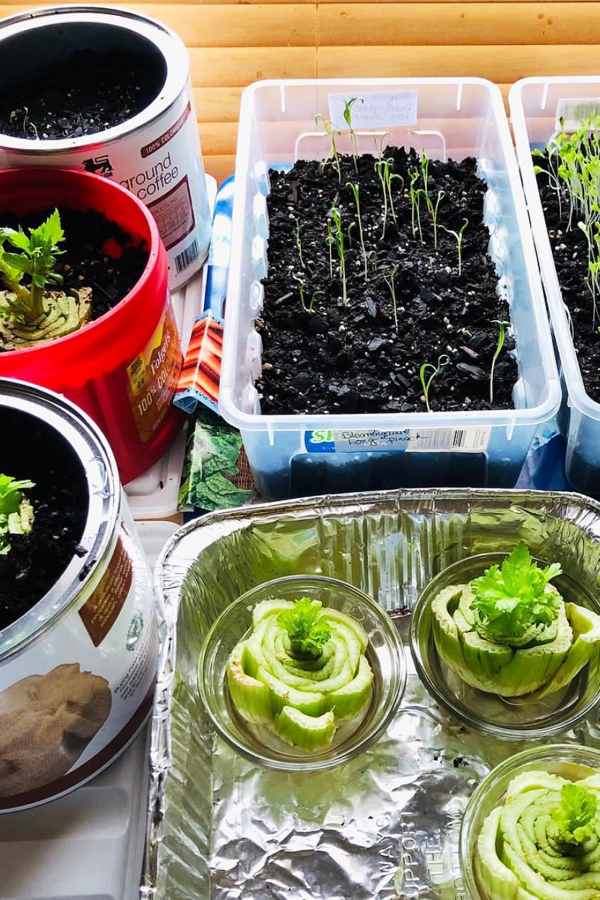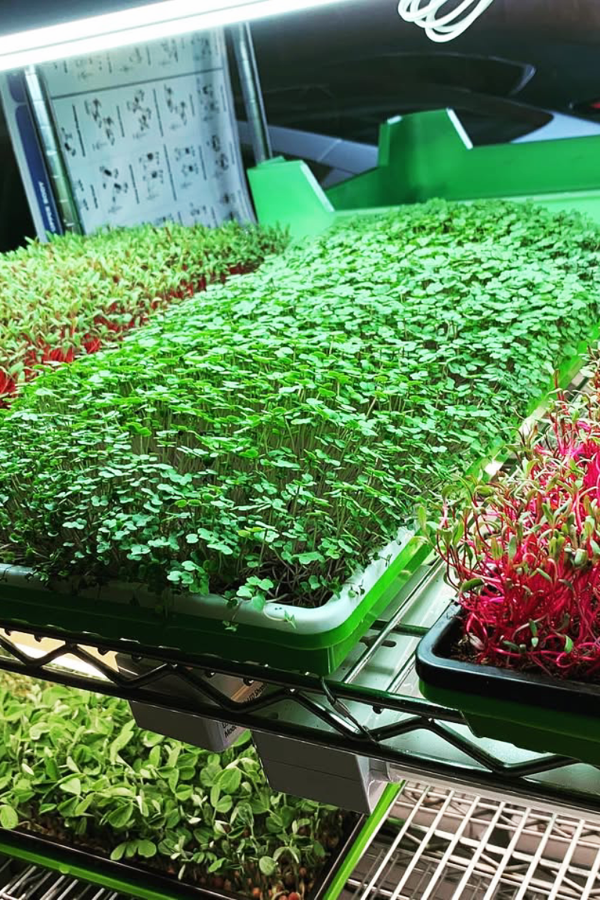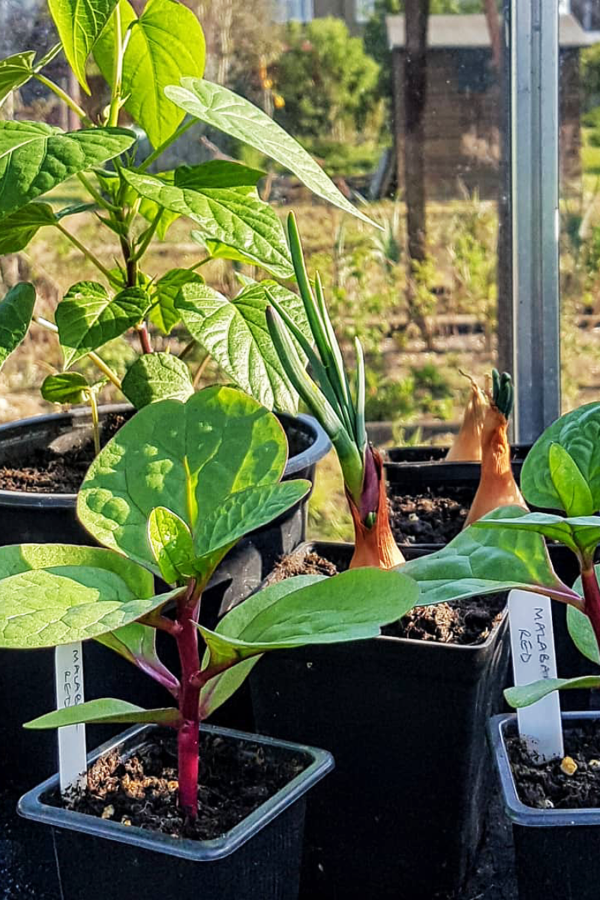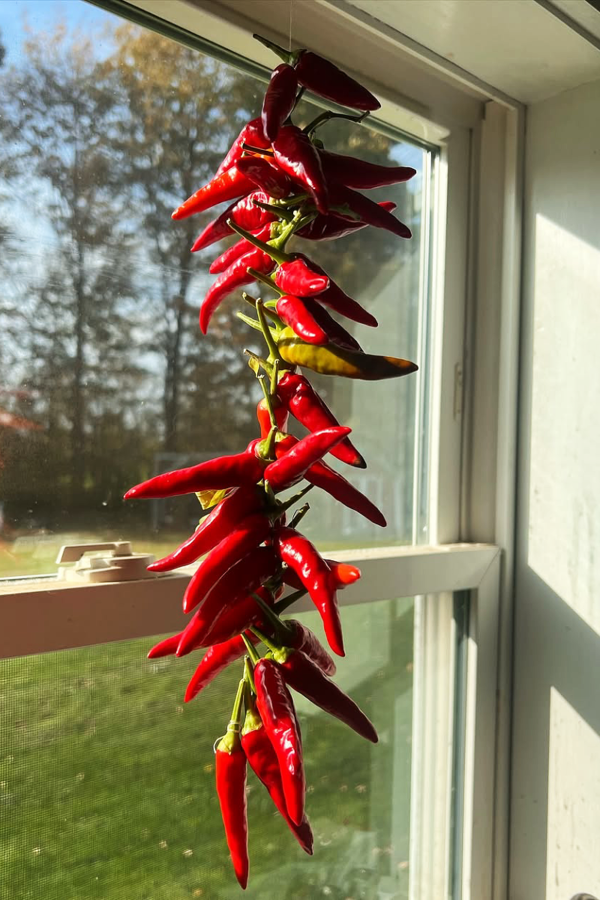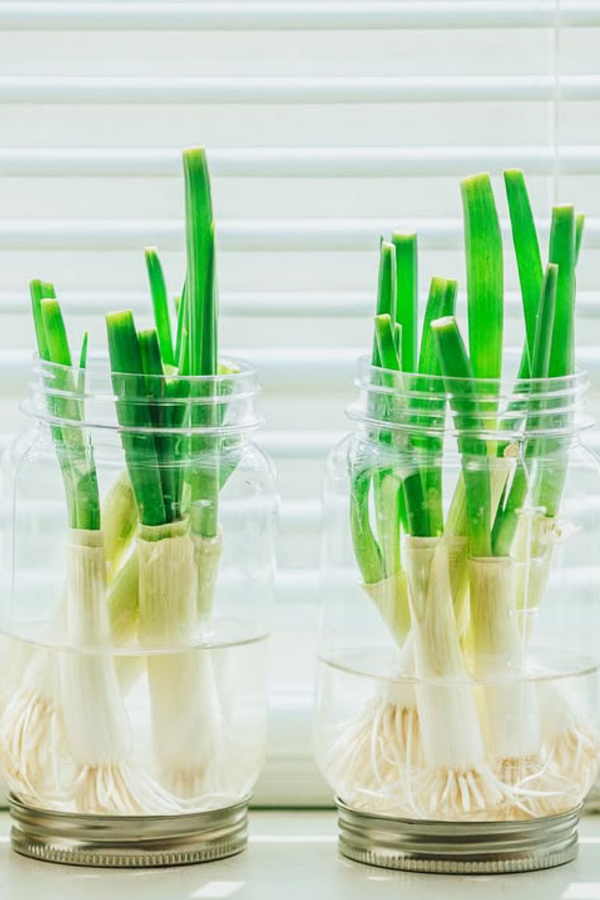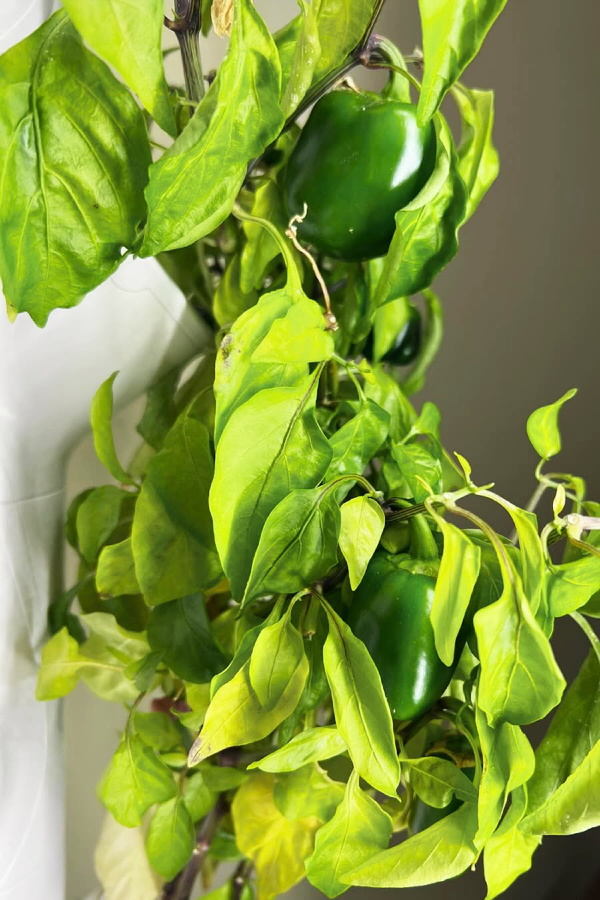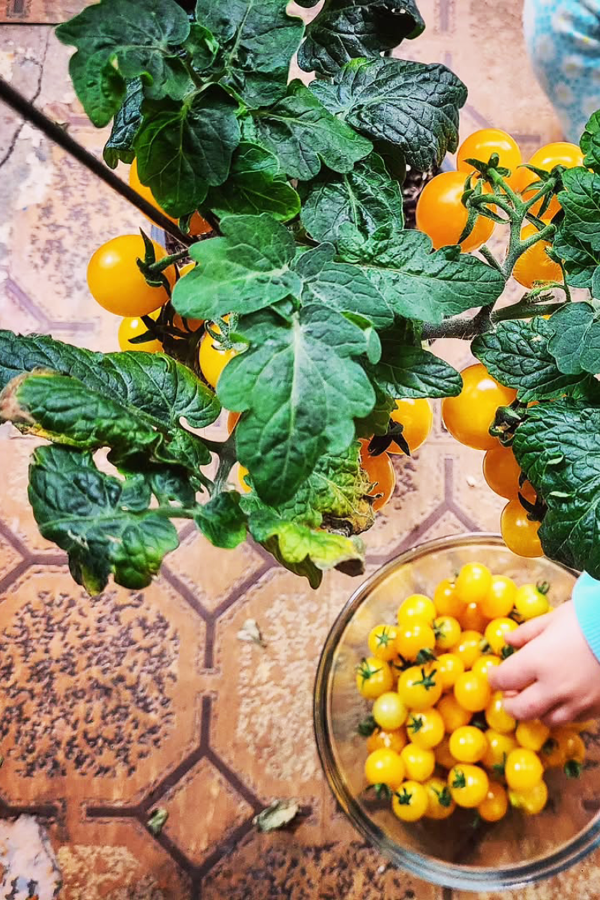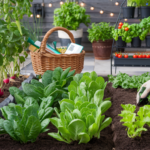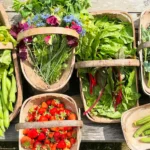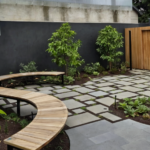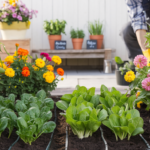Indoor Vegetable Gardening: Fresh Produce at Your Fingertips All Year Long
I’ve tried growing vegetables indoors before. Thought I had it all figured out. I set up my little windowsill garden, even got some grow lights, and felt like a pro. Then? The admiration phase hit. Instead of staying on top of watering and care, I spent way too much time just staring at my little sprouts, impressed with myself. Meanwhile, my plants were probably dying of thirst and wondering why they got stuck with such an unreliable caretaker.
Indoor gardening seems like it should be foolproof. No pests. No random heatwaves. No squirrels stealing your tomatoes. But that doesn’t mean it’s effortless. I learned that consistency is everything, and if you slack off—even for a little bit—your plants will make you regret it.
That said, it’s still one of the coolest things ever to be able to pluck fresh basil straight from your kitchen or grab some lettuce for a sandwich without stepping outside. If you’re thinking of giving it a shot, here’s what you need to know before you start feeling like a homegrown produce champion.
Things to Keep in Mind Before Starting
- Light is a big deal. Easily my biggest concern. We had a small windowsill and some grow lights, but I was always second-guessing if my plants were getting enough. Some veggies need more light than a diva in a Broadway spotlight. Others are more chill about it. Getting the right setup before planting saves a lot of headaches.
- Watering is weirdly complicated. Too much? Your plants drown. Too little? They throw a dramatic fit and wilt. Finding that sweet spot is an ongoing struggle, but once you get it, you’ll feel like a genius.
- Space adds up fast. Some plants stay neat and polite. Others (looking at you, tomatoes) spread like they own the place. Planning ahead makes a difference, unless you enjoy being boxed in by your own cucumber vines.
- Consistency matters. A lot. I used to think I was taking care of my plants, but really, I was just checking in occasionally to see if they were still alive. Daily watering, light adjustments, and keeping them in check makes all the difference between a thriving indoor garden and a very sad, very wilted regret.
This time around, I’ve got a better plan, more patience, and the determination to actually follow through. If you’re ready to dive in, you’re in for an awesome (and slightly messy) experience.
Up next, I’m breaking down 25 of the best vegetables for indoor growing—the ones that actually thrive, not just survive. Let’s get growing!
The Best Vegetables to Grow Indoors
Indoor gardening sounds like something out of a sci-fi movie. Fresh veggies. No pests. No sweating in the sun. Just plucking lettuce straight from your kitchen like some kind of modern homesteader. But before you start picturing yourself living off the land (or, uh, your apartment), let’s talk about which veggies actually work indoors. Because some plants are divas. They need too much space, too much light, or just refuse to thrive unless conditions are perfect.
These, on the other hand? These are the good ones. They grow fast, don’t need much space, and will make you feel like a gardening champion.
Leafy Greens (Fast, Foolproof, and Hard to Kill—Mostly)
If you’re impatient and want quick results, leafy greens are where it’s at. They grow fast, don’t need deep soil, and will keep producing if you don’t rip them out of the dirt like a savage.
Lettuce
- Ready to harvest in 3–4 weeks if you’re impatient, 6–8 weeks for full heads
- Grows best with 12 hours of light per day
- Loose-leaf varieties like Butterhead and Romaine regrow after cutting, so they last longer—unlike my motivation for meal prepping
Spinach
- Takes 4–6 weeks to grow, so still pretty fast
- Prefers cooler temperatures and indirect light (basically the introvert of the leafy greens)
- If it gets too warm, it bolts, meaning it stops growing leaves and betrays you by sending up flowers instead
Kale
- Harvest baby leaves in 4–6 weeks and keep picking for months
- Needs 12–14 hours of light daily
- Basically unkillable. If you can’t keep kale alive, maybe gardening isn’t your thing. No judgment
Herbs (Because Buying a Bunch from the Store is Always a Waste)
Fresh herbs change the game when you’re cooking. The problem? Buying them at the store means using three leaves before the rest dies a slow, soggy death in your fridge. Growing them indoors means you can snip what you need, when you need it.
Basil
- Ready to use in 3–4 weeks
- Needs 12–14 hours of light per day
- Trim regularly to keep it from getting all leggy and weird
Parsley
- Slower than basil, about 6–8 weeks
- Prefers 10–12 hours of light daily
- Once established, it won’t stop growing, which means you’ll finally get to use more than three leaves before it goes bad
Chives
- Harvest in 3–4 weeks
- Only needs 10–12 hours of light
- If you forget to water them, they’ll forgive you. Basically the best plant for people who are forgetful but trying their best
Cilantro
- Ready to pick in 3–4 weeks
- Needs 12+ hours of light daily
- Bolts quickly, so plant new seeds every few weeks unless you enjoy disappointment
Microgreens (Tiny, but Nutrient-Packed)
If you want instant results, microgreens are the move. They sprout ridiculously fast, don’t need much space, and make you feel like a health guru.
- Best options: Radish greens, broccoli sprouts, mustard greens, pea shoots, arugula
- Ready in 1–3 weeks (yes, that fast)
- Can grow on soil, a damp paper towel, or probably just your willpower
- Mist with water daily and watch them magically appear
Root Vegetables (Yes, You Can Grow Carrots Indoors. No, It’s Not Weird)
Root veggies seem like an odd choice for indoor gardening, but some actually do really well in containers. They take a little patience, but the payoff is worth it.
Carrots
- Takes 8–12 weeks to mature, so not exactly fast, but you get real carrots, which is cool
- Needs 10–12 hours of light per day
- Use a deep pot (at least 8 inches) so they don’t end up looking like tiny orange pretzels
Radishes
- Super fast—ready to eat in 3–4 weeks
- Needs at least 10 hours of light daily
- If you want quick gardening wins, this is the one. Also, radishes are weirdly fun to pull out of the dirt
Green Onions
- Harvest in 2–3 weeks
- Thrives with 10–12 hours of light
- The easiest plant of all time. Just stick the white ends from store-bought green onions in water and boom—free food forever
Peppers, Tomatoes, and Other Surprisingly Easy Indoor Veggies
At this point, you might be thinking, “Can I really grow actual vegetables indoors, or am I just sticking with tiny greens?” Good news—some of your favorite grocery store staples, including peppers, tomatoes, and even cucumbers, can thrive indoors with the right setup.
Now, they’re not as foolproof as leafy greens or herbs. They need more light, more space, and a little more attention, but once they start producing? It’s game on.
Peppers (Because You Need Spice in Your Life)
Peppers are basically the overachievers of indoor gardening. Give them enough warmth and light, and they’ll keep producing for months. The best part? You can pick them at different stages—small and green, or let them ripen for a sweeter or spicier kick.
Bell Peppers
- Time to Harvest: 2–3 months (yeah, they take their sweet time)
- Light Needs: At least 14–16 hours of bright light per day
- Special Notes: They start slow, but once they take off, you’ll have peppers for months. They need big pots and stakes for support when they get tall.
Chili Peppers
- Time to Harvest: About 2 months
- Light Needs: Same as bell peppers—14–16 hours a day
- Special Notes: These love warmth and keep producing year-round. Jalapeños, cayenne, and Thai chilies all grow well indoors. Also, once you touch them, do not rub your eyes unless you enjoy pain.
Tomatoes (The Most Popular Indoor Crop)
If you’ve ever had a homegrown tomato, you already know—they’re on a different level from the sad, flavorless ones at the store. The good news? You can grow them inside. The bad news? They’re a bit needy.
Cherry & Grape Tomatoes
- Time to Harvest: 2–3 months
- Light Needs: 16+ hours per day
- Special Notes: They need lots of warmth, consistent watering, and a support cage or trellis to keep from toppling over. But once they start producing, you’ll have fresh tomatoes every day.
Mushrooms (Because They Don’t Even Need Sunlight)
Finally—a plant that doesn’t throw a tantrum when it doesn’t get enough light. Mushrooms are weirdly perfect for indoor growing. They thrive in dark, humid spaces, which means you can grow them in a basement, under a sink, or even a closet.
Best Varieties for Indoors
- Oyster Mushrooms – Mild, buttery, and grow fast.
- Shiitake Mushrooms – Earthy, meaty, and perfect for soups.
- White Button Mushrooms – The ones you see in every grocery store. Easy to grow and great for beginners.
- Time to Harvest: 3–5 weeks, depending on the variety
- Light Needs: None. Actually, too much light can mess them up.
- Special Notes: You’ll need a mushroom growing kit or spores, plus a dark, humid place. If you’ve got patience, they’re one of the easiest things to grow.
Beans & Peas (Yes, You Can Grow Them Inside)
These plants love to climb, which makes them great for small-space trellises or hanging gardens. Bonus: They keep producing for months if you keep harvesting them.
Bush Beans
- Time to Harvest: 6–8 weeks
- Light Needs: At least 12 hours per day
- Special Notes: Unlike pole beans, these stay compact and don’t need a tall trellis. Just keep picking them, and they’ll keep growing.
Sugar Snap Peas
- Time to Harvest: 2 months
- Light Needs: 10–12 hours per day
- Special Notes: These love cooler temps, so they do fine indoors. You’ll need a small trellis or something for them to climb. Once they start growing, they don’t stop.
Cucumbers (Yes, Even Indoors!)
Cucumbers seem like an outdoor-only plant, but some varieties actually do great in containers. They need a lot of water and a support structure, but once they get going, you’ll have fresh cucumbers all the time.
Dwarf Varieties (Like ‘Patio Snacker’)
- Time to Harvest: 6–8 weeks
- Light Needs: 12–14 hours per day
- Special Notes: Use a trellis or stake to keep them upright. And water them constantly—cucumbers are thirsty plants. If they dry out, they’ll punish you by stopping production.
Common Indoor Gardening Challenges & How to Fix Them
Even if you do everything right, something will go wrong. But don’t worry, most problems are fixable (unlike that one plant you forgot about for a month).
Lack of Sunlight: What to Do When Your Plants Are Starving for Light
If your plants look pale, sad, or stretched out like they’re trying to escape, they need more light.
- Best Fix: Full-spectrum LED grow lights. Place them 4–6 inches above smaller plants, 12–18 inches above larger ones.
- If you only grow leafy greens & herbs, fluorescent or LED bulbs work fine.
- For fruiting plants like tomatoes, peppers, and cucumbers? Go full-strength with high-intensity grow lights.
Overwatering vs. Underwatering: Finding the Sweet Spot
Overwatering is the number one indoor plant killer (yes, even before forgetting to water).
Signs of overwatering:
- Yellowing leaves
- Mushy, black roots
- Fungus gnats flying around like they pay rent
Signs of underwatering:
- Droopy, sad-looking leaves
- Crispy edges
- Soil pulling away from the sides of the pot like it’s giving up on life
If you tend to overwater, try bottom watering instead. If you forget to water, set a reminder on your phone. Or just accept that chives are your only safe option.
Indoor plants need just as much attention as outdoor ones, and sometimes, the trick is knowing when to adjust. If you’re thinking about taking your green thumb beyond your home, check out The Ultimate Planting Guide for Vegetables: Spring Edition for expert tips on starting a thriving outdoor garden.
Pest Control for Indoor Gardens
Yes, indoor gardens can still get pests. Sometimes they sneak in from store-bought plants, other times they just appear out of nowhere like uninvited guests.
- Fungus Gnats: These tiny flying menaces love wet soil. Let your soil dry out a bit, use sticky traps, and sprinkle cinnamon on top (yes, really—it kills their eggs).
- Aphids & Spider Mites: If you see tiny bugs crawling around, wipe them off with soapy water or hit them with neem oil.
- Whiteflies: If you shake your plant and a tiny white bug army flies out, congrats, you have whiteflies. A mix of dish soap and water in a spray bottle takes care of them.
Keeping an indoor garden healthy takes some trial and error, but so does maintaining an entire outdoor space. If you’re ready to expand your gardening skills beyond your windowsill, check out these 14 Vegetable Gardening Tips to Protect Your Plants from Pests and Diseases for even more ways to keep your plants thriving.
Keeping Plants Healthy Year-Round
Even the best indoor gardens have their moments. Here’s how to keep yours going strong.
- Rotate Plants Weekly: If they’re using natural light, give them a turn so they grow evenly.
- Trim & Harvest Often: The more you pick, the more they grow. Plants don’t like being ignored.
- Repot When Necessary: If roots start coming out of the drainage holes, it’s time for a bigger pot.
Indoor gardening is one of the easiest ways to grow your own food, but having the right setup makes all the difference. Get the lighting right, don’t drown your plants, and give them enough space to spread out. Do that, and you’ll be harvesting fresh veggies all year long—without ever stepping outside.
Next up, some fun DIY ideas to take your indoor garden to the next level. Because once you start, you won’t want to stop.
Fun DIY Indoor Garden Ideas
Indoor gardening is already a win, but why not make it even cooler with some DIY flair? These ideas save space, look great, and honestly? Make you feel like a gardening genius.
Mason Jar Herb Gardens
Mason jars make everything look fancy. Perfect for basil, chives, and parsley, they’re easy to set up and even easier to maintain.
- Add pebbles for drainage (since jars have none).
- Fill with potting mix and plant your herbs.
- Water lightly and keep near a sunny window.
Looks cute. Smells amazing. Also zero waste on store-bought herbs that die in your fridge.
Wall-Mounted Vertical Gardens
Short on space? Go vertical. This setup works great for herbs, greens, or peas and doubles as home decor.
- Hanging planters or floating shelves = instant plant wall.
- Pegboard systems keep things flexible (and organized).
- Rotate plants so they don’t grow sideways in search of light.
Hydroponic Systems for Beginners
No soil, no mess, just crazy fast growth. Hydroponics sounds fancy, but it’s ridiculously easy.
- Buy a kit or DIY with a plastic bin and net cups.
- Start with lettuce, basil, or mint—they thrive in water.
- Use LED grow lights and change water weekly.
Once you see how insanely fast plants grow in hydroponics, you might never go back.
Upcycling Containers for Plants
No need for expensive pots. Turn everyday items into planters.
- Coffee cans → Herbs & bush beans
- Egg cartons → Seed starters
- Takeout containers → Mini greenhouses
- Shoe organizers → Hanging herb pockets
Just poke some drainage holes, and boom—instant eco-friendly garden.
Conclusion
Indoor gardening isn’t hard, and with a little creativity, it’s even better.
- Start small with herbs or lettuce.
- Make sure they get enough light.
- Don’t drown them in water.
- Experiment! Stack plants, repurpose containers, or go full mad scientist with hydroponics.
Once you see those first leaves sprout? You’re hooked.
More Inspiration
FAQ
Can You Grow Vegetables Indoors All Year Round?
Absolutely! Indoor gardening means no seasons, no frost, and no surprise weather disasters. As long as you give your plants the right amount of light, water, and nutrients, you can grow veggies anytime. Leafy greens, herbs, microgreens, and even peppers thrive indoors year-round. Just be mindful that some plants (like tomatoes or cucumbers) need more light and warmth to keep producing.
What is the Easiest Vegetable to Grow Inside?
If you’re looking for low effort, high success, go with:
- Green onions – Regrow them in water from store-bought stalks.
- Lettuce – Fast-growing and keeps regrowing after cutting.
- Radishes – Super quick (ready in 3–4 weeks).
- Microgreens – Grow crazy fast (harvest in 1–3 weeks).
- Chives – Basically unkillable and forgives neglect.
If you’re a forgetful plant parent, chives and green onions are your best bet.
Is Growing Vegetables Indoors Worth It?
Yes! Fresh herbs and greens at your fingertips, no grocery store trips, no food waste, and no dealing with bugs or weeds. It’s also cheaper in the long run—buy seeds once, and you’ve got a continuous supply of produce. Plus, it’s just fun. Watching something grow from a tiny sprout into actual food? Weirdly satisfying.
Can You Grow Vegetables Indoors with LED Lights?
100%. LED grow lights mimic sunlight and work perfectly for indoor gardens. The trick is choosing the right kind:
- Full-spectrum LED lights – Best for all plants, especially fruiting ones like tomatoes or peppers.
- Regular LED bulbs – Fine for herbs and leafy greens, but weaker than dedicated grow lights.
- Positioning matters – Keep lights 4–6 inches above small plants, 12–18 inches for bigger ones.
As long as your veggies get 12–16 hours of light per day, LEDs will do the job.



